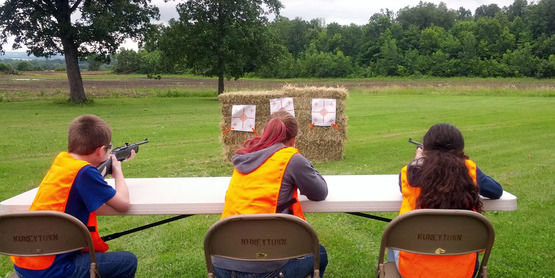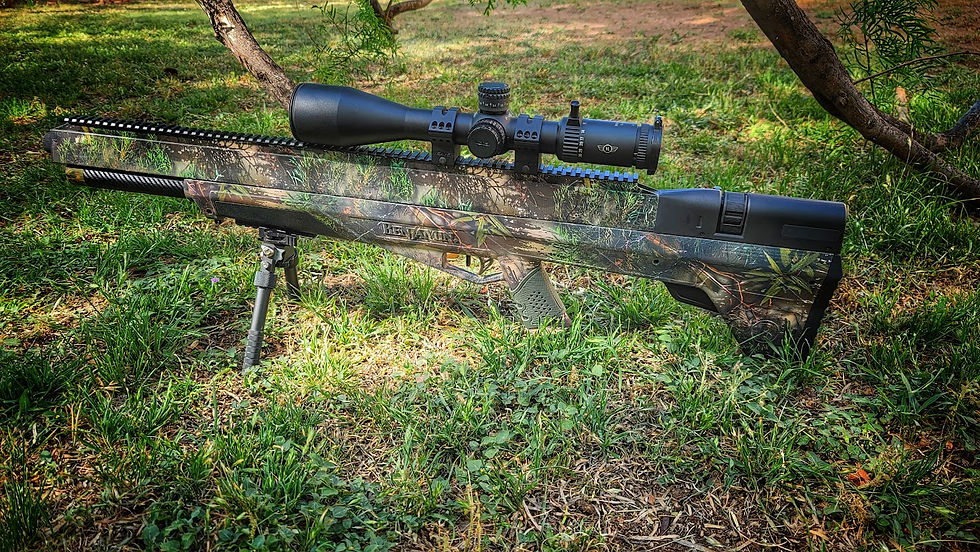The History of Airguns: From Ancient Origins to Modern Precision
- Matt Hodges

- Sep 9
- 4 min read

Airguns, also known as pneumatic guns or air rifles, have a fascinating history that spans centuries, evolving from rudimentary designs to sophisticated tools used for sport, hunting, and even military purposes. This blog post explores the origins, development, and modern advancements of airguns, tracing their journey through time.
Early Beginnings: The Birth of Air-Powered Weapons
The concept of using compressed air to propel projectiles dates back to antiquity. One of the earliest recorded uses of an air-powered device was the blowgun, a simple tube through which darts were propelled by human breath. Used by indigenous cultures in regions like South America, Southeast Asia, and Africa, blowguns were effective for hunting small game and, in some cases, warfare.
However, the true precursor to modern airguns emerged in the 16th century in Europe. Around this time, craftsmen began experimenting with bellows and compressed air to create more powerful pneumatic weapons. The bellows gun, a primitive airgun, used a hand-operated bellows to compress air in a chamber, which was then released to fire a projectile. These early devices were cumbersome and limited in range and power but marked the beginning of airgun technology.
The 17th and 18th Centuries: Airguns in Warfare and Royalty
By the 17th century, airguns had evolved into more sophisticated designs, particularly in Europe. Gunsmiths in Austria, Germany, and France developed airguns that used metal reservoirs to store compressed air, allowing for greater power and accuracy. These weapons, often called windbüchse (wind rifles) in German, were expensive to produce and required skilled craftsmanship, making them a luxury item favored by nobility.
One of the most famous early airguns was the Girandoni air rifle, developed around 1779 by Italian inventor Bartolomeo Girandoni. This repeating air rifle could fire up to 20 rounds from a tubular magazine, making it one of the first rapid-fire weapons. The Girandoni rifle was used by the Austrian army during the Napoleonic Wars and is perhaps best known for its association with the Lewis and Clark Expedition (1804–1806). Meriwether Lewis carried a Girandoni air rifle, which impressed Native American tribes with its quiet operation and lack of smoke compared to traditional firearms.
Airguns during this period were not only tools of war but also symbols of prestige. European royalty, including figures like Napoleon Bonaparte, reportedly admired airguns for their precision and quiet operation, using them for hunting and target shooting.
The 19th Century: Airguns for the Masses
The 19th century saw significant advancements in airgun technology, making them more accessible to the general public. The Industrial Revolution brought improvements in manufacturing, allowing for mass production of airguns at lower costs. Key developments included:
Spring-Piston Airguns: In the late 1800s, the spring-piston mechanism became a game-changer. By using a spring-loaded piston to compress air in a chamber, these airguns were simpler and more reliable than earlier designs. The break-barrel air rifle, where the barrel is hinged to cock the spring, became a popular design that remains widely used today.
Pneumatic Pump Airguns: Multi-pump pneumatic airguns, which allowed users to manually pump air into a reservoir, gained popularity. These guns offered adjustable power levels, making them versatile for different shooting purposes.
Airguns became popular for recreational shooting, pest control, and small game hunting. Companies like Daisy (founded in 1886 in the United States) began producing affordable airguns, such as the iconic Daisy Red Ryder BB gun, which introduced generations of young shooters to the world of airguns.
The 20th Century: Sport and Specialization
The 20th century marked a turning point for airguns as they became firmly established in competitive shooting and recreational sports. The development of CO2-powered airguns in the mid-20th century was a significant milestone. These guns used small, disposable CO2 cartridges to propel pellets, offering consistent power without the need for manual pumping or cocking. CO2 airguns became popular for plinking and informal target shooting.
In the realm of competitive shooting, airguns found a niche in events like 10-meter air rifle and air pistol competitions, which became part of the Olympic Games in 1984. These precision airguns, often powered by pre-charged pneumatic (PCP) systems, emphasized accuracy and consistency, leading to advancements in pellet design and barrel rifling.
The pre-charged pneumatic (PCP) airgun, which uses a high-pressure air reservoir filled by an external pump or scuba tank, also gained traction in the late 20th century. PCP airguns offered superior accuracy and power, making them ideal for hunting and long-range shooting.
The 21st Century: Modern Airguns and Innovation
Today, airguns are more advanced than ever, with cutting-edge technologies enhancing their performance and versatility. Modern airguns are used for a wide range of purposes, from recreational plinking to professional-grade competition and hunting. Key trends in contemporary airgun development include:
High-Power PCP Airguns: Modern PCP airguns can fire large-caliber pellets at velocities rivaling some firearms, making them suitable for hunting larger game like deer or wild boar in some regions.
Electronic Airguns: Some airguns now incorporate electronic triggers and regulators for enhanced precision and consistency, particularly in competitive shooting.
Airgun Accessories: Advances in optics, silencers, and moderators have made airguns more effective for hunting and target shooting, with many models featuring Picatinny rails for mounting scopes and other accessories.
Airgun manufacturers like Crosman, Gamo, Weihrauch, and Air Arms continue to innovate, producing airguns that cater to beginners and experts alike. Additionally, airguns have gained popularity in regions with strict firearm regulations, as they offer a viable alternative for sport and pest control.
The Cultural Impact of Airguns
Beyond their technical evolution, airguns have left a lasting cultural impact. They are often a young shooter’s first introduction to marksmanship, teaching safety, discipline, and precision. Iconic models like the Daisy Red Ryder have become cultural symbols, featured in films like A Christmas Story (1983), where the famous line “You’ll shoot your eye out!” became synonymous with the BB gun.
Airguns also play a role in environmental conservation, as they are often used for pest control without the need for chemical poisons. Their quiet operation and low cost make them an attractive option for farmers and landowners.
Conclusion
From ancient blowguns to the high-tech PCP rifles of today, airguns have come a long way. Their history is a testament to human ingenuity, blending craftsmanship, engineering, and innovation. Whether used for sport, hunting, or recreation, airguns continue to captivate enthusiasts worldwide, offering a unique blend of accessibility, precision, and versatility. As technology advances, the future of airguns promises even greater possibilities, ensuring their place in the world of shooting sports for generations to come.








Comments